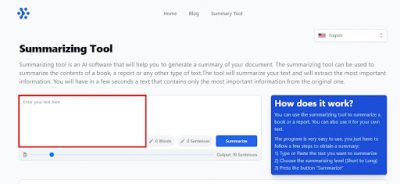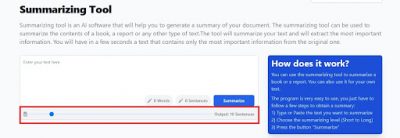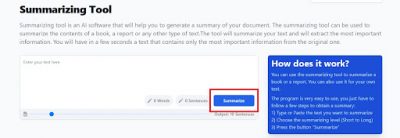Nowadays, writing a summary is one of the most popular and useful skills for learners at all levels: from elementary school to university. However, summarizing is not everyone’s cup of tea. It takes a lot of time and energy to write a good summary, especially if you want to accurately convey the main message of the written text. It is no wonder that many learners are looking for ways to save time and effort on summary writing.
There are two main approaches to making the summarizing task easier: paraphrasing and text summarizing. Paraphrasing is a process of restating a written text without changing the meaning of its content. Text summarizing, on the other hand, is a task of reducing the amount of information in a written text without changing its meaning or original content.
In order to summarize effectively, you need to understand the main idea of the text and decide how much information you need to include in your summary. It is also important to know how to organize your summary so that it is easy to read and understand.
Summaries usually include the introduction, body and conclusion. The purpose of the introduction is to present an overview of the actual text. The body should include an account of all the major points in the actual text while the conclusion summarizes them.
The following tips may help you if you are trying to write a good summary:
- Choose a short time period, and be consistent with your time management when writing your summary.
- Make sure you know what you are supposed to include in your summary and what you are not supposed to include; avoid plagiarism by paraphrasing or quoting your source directly when needed.
- Write your summary from scratch, do not just copy and paste it from Google.
- Do not use complicated words and complicated grammar structures when writing your summary; always be as simple and direct as possible when writing summaries; remember that reading a summary is much easier than reading the actual text itself.
- If you cannot think of a way to start your summary, try using these summarizing questions: “What is this about? Who can benefit from this? What was new or surprising? What do I want others to know about this? What are its strengths? What are its weaknesses?”
- Use lists, tables and graphs if they are available in your source material; they will help make your summary more visually appealing and easier to read, especially if they are in their original form (that means not copied).
- If you need extra time and would like us to help you with writing summaries, please feel free to request our essay writing service .
How does it work?
Coseer’s free online text summarizer allows users to reduce the amount of information in a written text without changing its meaning or original content. This tool works by converting lengthy texts into short paragraphs containing only the most important parts of the original text. It is similar to using synonyms or phrases with key vocabulary terms when writing summaries.
1) Type or Paste the text you want to summarize:

2) Choose the summarizing level (Short to Long):

3) Press the button “Summarize”:

How useful is a Coseer text summarizer for summary writing?
- Coseer’s free online summarizer can be very useful for students who would like to improve their writing skills by becoming better at writing summaries.
- It can also be useful for people who have other types of writing assignments that require them to summarize a written piece of work by condensing its information into fewer words while staying true to its meaning and intent.
- For example, if you need to summarize a book for a book report, simply use Coseer’s online tool to create a short version of this book so that you can focus on what really matters for your project. Whether you are looking for an opportunity to show off your writing skills (and save time) or just want to quickly summarize some interesting articles before sharing them with your friends on Facebook or Twitter, Coseer’s free online tool can help you get this job done quickly and easily.
- The best part of this summarizing tool is that it is available in 16 languages. “English, Romanian, Spanish, German, Japanese, Lithuanian, Norwegian, Polish, Portuguese, Greek, Italian, Russian, Danish, Chinese, Dutch, and French”.
- Service is completely free.
Final Words
Although the service is completely free, from time to time Coseer may use this tool for their own purposes, such as creating summaries of some of the most popular articles on their website.
Coseer will never sell or share your personal data with anyone. However, if you write a summary of an article that is published on Coseer’s website, it will be posted on this website under your name.
